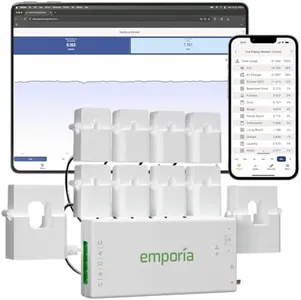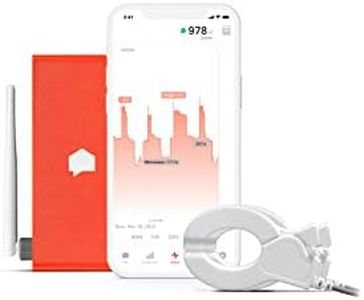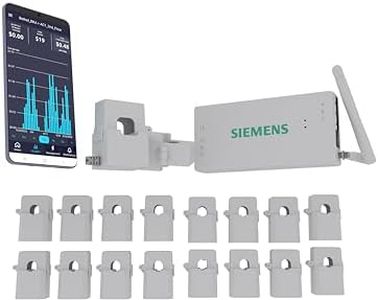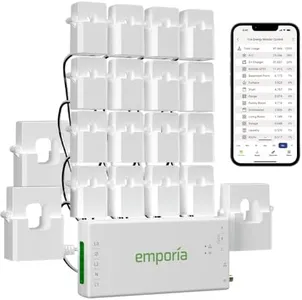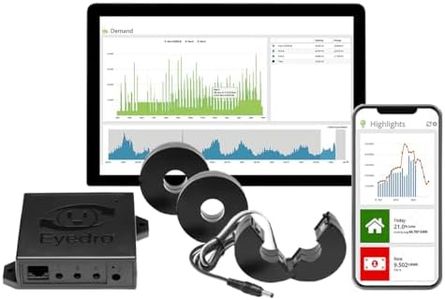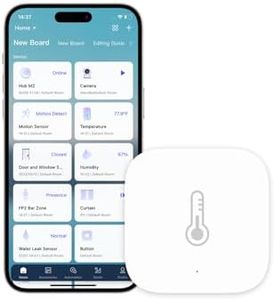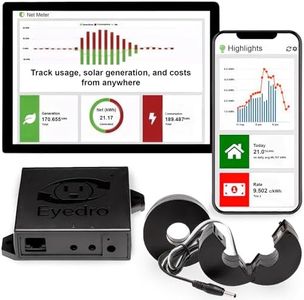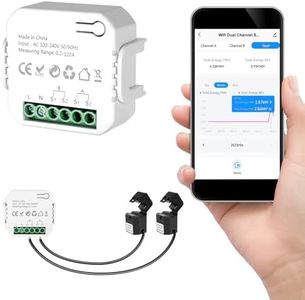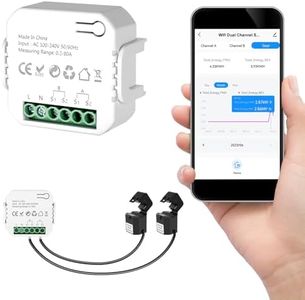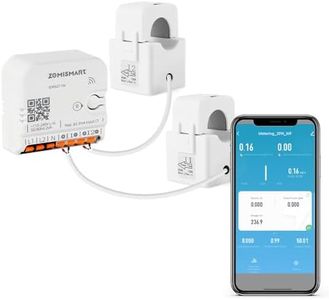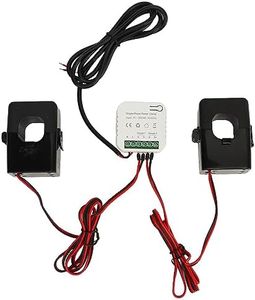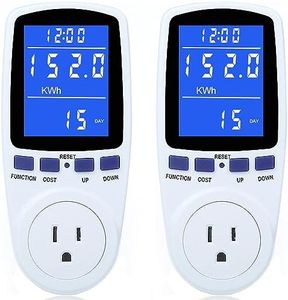10 Best Home Energy Monitor 2025 in the United States
Our technology thoroughly searches through the online shopping world, reviewing hundreds of sites. We then process and analyze this information, updating in real-time to bring you the latest top-rated products. This way, you always get the best and most current options available.

Our Top Picks
Winner
Emporia Vue 3 Home Energy Monitor - Smart Home Automation Module and Real Time Electricity Usage Monitor, Power Consumption Meter, Solar and Net Metering for UL Certified Safe Energy Monitoring
Most important from
935 reviews
The Emporia Vue 3 is a solid choice if you're looking to keep a close eye on your home’s energy use and save money on bills. It installs neatly inside your home's electrical panel using clamp-on sensors, supporting most common wiring setups. This makes it a good fit for typical single-phase or split-phase home systems, with options for more complex setups if you add extra sensors. Safety is a big plus here since it’s UL certified, meaning it meets strict electrical safety standards, giving you peace of mind.
You get real-time energy monitoring through the Emporia Energy app on your phone or computer, provided you have a 2.4 GHz Wi-Fi connection. The data accuracy is quite good, with sensors accurate within about 2%, which is reliable enough to track usage trends and spot savings opportunities. Real-time data updates every second when the app is open, though only recent short-term data stays on your device; longer-term data is stored in the cloud for easy access and export. The app also helps you automate energy management based on your utility’s rate plans and solar production if you have solar panels, which can help reduce your electric bills. Alerts and notifications help you stay informed if your usage spikes or if you can benefit from time-of-use savings. It integrates smoothly with other smart home systems, making it a useful part of a larger home automation setup.
The installation requires some familiarity with electrical panels or professional help, which might be a barrier if you’re not comfortable with wiring. The dependence on 2.4 GHz Wi-Fi means if your home Wi-Fi is spotty, that could affect real-time data reliability. Also, high-frequency data retention is limited to short periods unless you keep the app open, which might limit some detailed tracking. The Emporia Vue 3 offers accurate, safe, and user-friendly home energy monitoring with helpful features for managing costs and integrating with smart home devices, best suited for homeowners ready to install the monitor inside their electrical panel and comfortable using a smartphone app.
Most important from
935 reviews
Sense Energy Monitor - Track Electricity Usage in Real Time and Save Money - Meets Rigorous ETL/Intertek Safety Standards
Most important from
2990 reviews
The Sense Energy Monitor is a solid choice for homeowners looking to efficiently track their electricity usage in real time. Its standout feature is the ability to monitor energy consumption through a user-friendly app available on iOS, Android, and web platforms, allowing you to keep an eye on your home from anywhere. The product provides valuable insights into energy patterns, which can help users identify potentially wasteful habits and save money on their energy bills. Support for time-of-use rate plans is a great addition for those looking to optimize costs based on their usage patterns.
In terms of safety, the monitor meets rigorous ETL/Intertek standards, ensuring it can be safely installed within your electrical panel. This is reassuring for users concerned about safety compliance. The custom alerts feature is particularly useful for monitoring critical devices, enhancing safety by notifying users about potential issues, like forgetting to turn off an iron.
The Sense Energy Monitor is ideal for tech-savvy homeowners who want to monitor their energy usage closely and make informed decisions to reduce costs. It’s particularly advantageous for families looking to instill energy-saving habits while ensuring safety at home. However, those outside the supported regions or less experienced with electrical installations might find it a bit challenging.
Most important from
2990 reviews
SIEMENS Inhab Smart Home Energy Monitor with 16-50Amp Circuit Level Sensors and 2-200Amp Main Sensors for Real Time Electricity Monitoring and Metering
Most important from
65 reviews
The SIEMENS Inhab Smart Home Energy Monitor is an impressive tool designed for homeowners looking to track and manage their energy usage effectively. One of its standout features is its ability to provide real-time monitoring of both whole-home and individual circuit energy consumption, making it a solid choice for users who want insight into their energy habits. The integration with a mobile app enhances its usability, allowing users to access current and historical data anytime. Personalized energy notifications are particularly beneficial for alerting users to unusual energy spikes or helping them identify opportunities for energy savings.
Installation is straightforward since it can be integrated into both new and existing electrical panels, catering well to a variety of setups. Additionally, the advanced features like Time of Use Management and Peak Demand Management can be particularly useful for tech-savvy users or those interested in optimizing their energy consumption further.
Potential users should note that it is currently compatible with only US and Canadian electrical systems. This limitation may be a drawback for users outside these countries. Also, while the product has rigorous safety certifications (CE marked and UL Listed), the initial setup may still require some electrical knowledge, which could be a hurdle for less experienced users.
Most important from
65 reviews
Buying Guide for the Best Home Energy Monitor
Choosing the right home energy monitor can help you track and manage your energy consumption, leading to potential savings on your utility bills and a more environmentally friendly household. When selecting a home energy monitor, it's important to consider several key specifications to ensure you get a device that meets your needs and provides accurate, useful information.FAQ
Most Popular Categories Right Now
